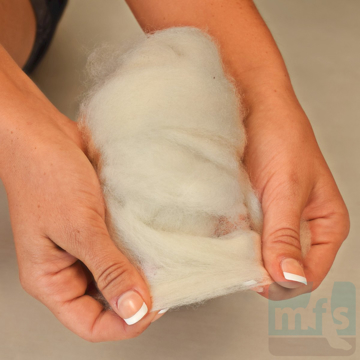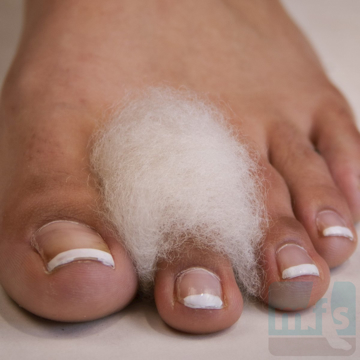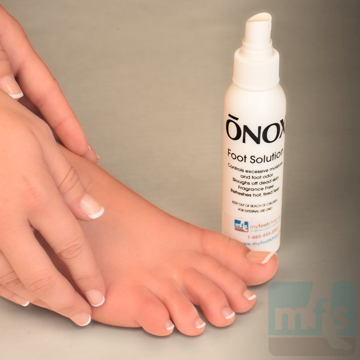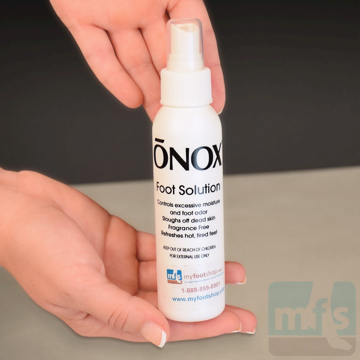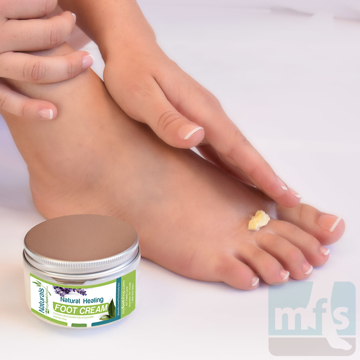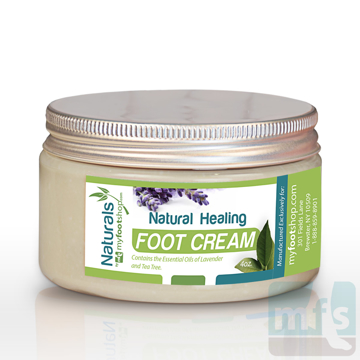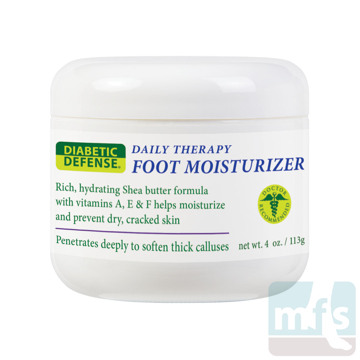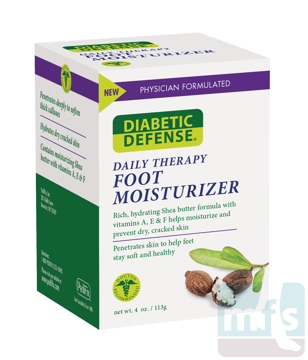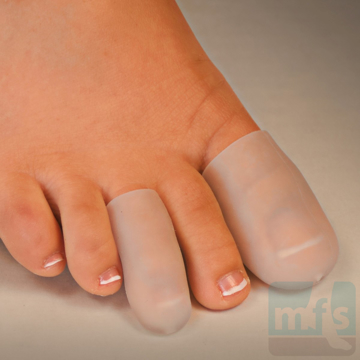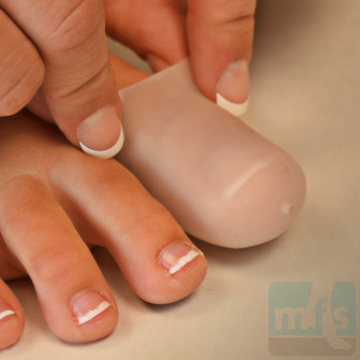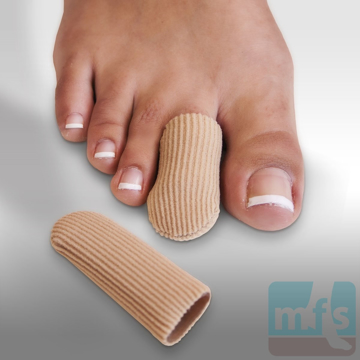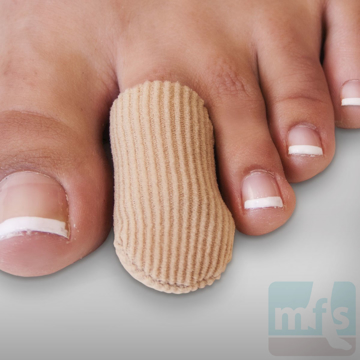- Summary
- Symptoms
- Read More
Raynaud's phenomenon is a vasospastic disorder of the small peripheral arteries called arterioles. This condition usually affects the fingers and toes but occasionally may affect other acral body parts such as the tongue, ear lobes, lips or nose. The term Raynaud's Phenomenon refers to the vasospastic process that occurs. Raynaud's Disease refers to the condition. Raynaud's disease is found primarily in women between the ages of 20 and 60.
Symptoms
- Rubor (redness) of the fingers and toes with initial exposure to cold
- Pallor (whiteness) of the fingers and toes with prolonged cold exposure
- Pain with prolonged exposure to cold
- Pain, sometimes severe, with re-warming the affected digits
- Occasional dermatitis with repetitive cold exposure
Description
 The most common form of Raynaud's Disease is ideopathic primary Raynaud's Disease and is found in young women in 60-90% of the cases reported.(1) Primary Raynaud's Disease describes the condition without secondary contributing factors. Secondary Raynaud's Disease is due to other connective or soft tissue disorders such as rheumatoid arthritis, systemic lupus or scleroderma.(2) Occasionally, secondary Raynaud's Disease may be due to peripheral vascular occlusive disease, neurogenic lesions or drug intoxications.
The most common form of Raynaud's Disease is ideopathic primary Raynaud's Disease and is found in young women in 60-90% of the cases reported.(1) Primary Raynaud's Disease describes the condition without secondary contributing factors. Secondary Raynaud's Disease is due to other connective or soft tissue disorders such as rheumatoid arthritis, systemic lupus or scleroderma.(2) Occasionally, secondary Raynaud's Disease may be due to peripheral vascular occlusive disease, neurogenic lesions or drug intoxications.
The picture to the left shows an interesting case of Raynaud's Disease that affects only the weight bearing surface of the digits. This 73 y/o patient described a 3-year history of sores on the bottom of her toes that began during the winter months and ended in spring with the onset of warm weather. The patient was not active and sat for long periods of time with her feet flat on the floor. The ischemic changes seen in the skin are specific to the weight bearing portions of her toes. This was caused by a combination of arterial vasospasm (Raynaud's Disease) and direct pressure to the skin by the floor that inhibited normal blood flow to the plantar surface of the digit. Treatment for this problem included limitation of cold exposure and elevating the feet to eliminate floor pressure against the toes.
Causes and contributing factors
 The cause of Primary Raynaud's Disease is unknown. Any condition or contributing factor that results in peripheral vasospasm may be considered a contributing cause of Secondary Raynaud's Phenomenon and Secondary Raynaud's Disease. Contributing conditions include anxiety, depression, rheumatoid arthritis, systemic lupus (SLE) and scleroderma. Contributing factors include cold exposure and nicotine. Primary and Secondary Raynaud's Disease are often seasonal and most active in the cold weather months. Exposure to cold air (air conditioning) during the summer can also initiate the onset of Raynaud's Phenomenon. Stress can also be considered a contributing factor to Raynaud's. Any emotional response that stimulates the sympathetic outflow or the release of catecholamines (stress, anger) may contribute to Raynaud's Disease.
The cause of Primary Raynaud's Disease is unknown. Any condition or contributing factor that results in peripheral vasospasm may be considered a contributing cause of Secondary Raynaud's Phenomenon and Secondary Raynaud's Disease. Contributing conditions include anxiety, depression, rheumatoid arthritis, systemic lupus (SLE) and scleroderma. Contributing factors include cold exposure and nicotine. Primary and Secondary Raynaud's Disease are often seasonal and most active in the cold weather months. Exposure to cold air (air conditioning) during the summer can also initiate the onset of Raynaud's Phenomenon. Stress can also be considered a contributing factor to Raynaud's. Any emotional response that stimulates the sympathetic outflow or the release of catecholamines (stress, anger) may contribute to Raynaud's Disease.
Differential Diagnosis
The differential diagnosis for Raynaud's Disease includes:
Complex regional pain syndromes
Frostbite
Frostnip
Immersion foot
Trench foot
Treatment
Initial treatment of Raynaud's Disease consists of avoidance of any contributing factors to the condition such as cold exposure, emotional swings or smoking (including smokeless tobacco and vape pens.) Nicotine is a potent vasoconstrictor. Sedatives, mood stabilizers, and psychological counseling may be helpful to control contributing factors such as stress and anxiety that may contribute to Secondary Raynaud's Disease.
Active Raynaud's phenomenon should be treated with slow warming. Rapid warming may result in reflux hyperemia and pain. Warming the hands and feet in lukewarm water is recommended.
Drug therapies include two categories of medications:
Calcium channel blockers - calcium channel blockers are used to treat high blood pressure. The mechanism of action for this category of drug is to relax the peripheral resistance in arteries and smaller arterioles.(3,4,5) This mechanism of action tends to increase circulation to the extremities. Examples of calcium channel blockers include:
- Nifedipine (Procardia)
- Amlodipine (Norvasc)
- Verapamil (Calan, Isoptin)
- Diltiazem (Cardizem)
- Felodipine (Plendil)
- Nisoldipine ( Sular)
- Beprildil (Vascor)
Alpha blockers, also used to treat high blood pressure, are used to decrease sympathetic tone of the arteries. Examples of this class of drugs include:
- Prazosin (Minipress)
- Doxazosin (Cardura)
A surgical procedure performed by a neurosurgeon, called a sympathectomy, is reserved for the most severe cases of Raynaud's Disease. A sympathectomy is a surgical release of the sympathetic nerve root at the area of the spine treating the nerve that affects the extremity (arm or leg.)
Drugs to avoid that may contribute to Raynaud's Disease include the following:
- Over the counter cold and flu medications that include pseudophedrine (Actifed, Chlor-Trimeton, Sudafed)
Beta-blockers
- Acebutolol (Secral)
- Atenolol (Tenormin)
- Bisprolol ((Zebeta)
Carteolol (Cartol) - Metoprolol (Lopressor, Toprol XL)
- Nadolol (Corgard)
- Propranolol (Inderal)
Topical L-arginine cream can help warm hands and toes. L-arginine cream is a good prophylactic trick to pre-empt cold exposure and is handy for going outdoors in cold climates in winter. In-shoe warming devices are also helpful in this regard.
Complementary and Alternative Therapies
Visual imagery techniques are helpful for some patients. As an example:
Wendy has had problems with Raynaud's Disease for years. She is a mom and employed as a banker. On days when she is particularly busy, her fingers will blanch white and become cold. Wendy has found that she can control these symptoms by stopping everything that she is doing. She folds her hands in her lap and visualizes in her mind a beam of sunlight coming through a window focused on her hands. She feels the warmth of the sun on her hands. Wendy performs this exercise as needed. In addition to improving the temperature of her hands, she also notices a reduction in her stress level and tightness in her back.
Nutritional supplements that may help to treat Raynaud's Disease include:
- Evening primrose oil (EPO) (3-6 g per day) - EPO is a fatty acid that helps to prevent narrowing of arteries and arterioles. EPO does increase the risk of bleeding and should not be used in patients who are on blood thinners.(6)
- Omega-3 fatty acids (fish oil) (1,500 mg 2-3 times a day) - omega-3 fatty acids help to prevent occlusion of arteries and arterioles, thereby increasing peripheral flow. Omega-3 fatty acids have shown promise in studies treating Primary Raynaud's Disease. Their efficacy in Secondary Raynaud's Disease has not been proven.
Herbs:
- Ginkgo biloba (120-160 mg/day) Ginkgo has been shown to increase the diameter of peripheral blood vessels in clinical studies. Ginkgo can increase the risk of bleeding and should not be taken with blood thinners.(6)
When to contact your doctor
If your Raynaud's becomes frequent and difficult to manage, consult your podiatrist or primary care doctor for additional treatment recommendations.
References
1. Ferri: Ferri's Clinical Advisor 2014, 1st ed. St. Louis, MO: Mosby.2013
2. Herrick AL. Pathogenesis of Raynaud's Phenomenon. Rheumatology. 2005;44(5):587-96.
3. Huisstede BM, Hoogvliet P, Paulis WD, van Middlekoop M, Hausman M, Coert JW, Koes BW. Effectiveness of interventions for secondary Raynaud's phenomenon: A systemic review. Arch Phys Med Rehabil. 2011 Jul;92(7):1166-80.
4. Levien TL. Advances in the treatment of Raynaud's phenomenon. Vasc Health Risk Manag. 2010 Mar 24;6:167-77.
5. Thompson AE, Pope JE. Calcium channel blockers for primary Raynaud's phenomenon: A meta-analysis. Rheumatology. 2005;44(2):145-50.
6. Malenfant D, Catton M, Pope JE. The efficacy of complementary and alternative medicine in the treatment of Raynaud's phenomenon: A literature review and meta-analysis. Rheumatology (Oxford). 2009 Jul;48(7):791-5.
7. Muir AH, Robb R, McLaren M, et al. The use of Ginko Biloba in Raynaud's Disease: a double-blind placebo-controlled trial. Vasc Med. 202;7:265-7.
Author(s) and date
![]() This article was written by Myfootshop.com medical advisor Jeffrey A. Oster, DPM.
This article was written by Myfootshop.com medical advisor Jeffrey A. Oster, DPM.
Competing Interests - None
Cite this article as: Oster, Jeffrey. Raynaud's Disease. https://www.myfootshop.com/article/raynauds-disease
Most recent article update: January 14, 2021.
 Raynaud's Disease by Myfootshop.com is licensed under a Creative Commons Attribution-NonCommercial 3.0 Unported License.
Raynaud's Disease by Myfootshop.com is licensed under a Creative Commons Attribution-NonCommercial 3.0 Unported License.



